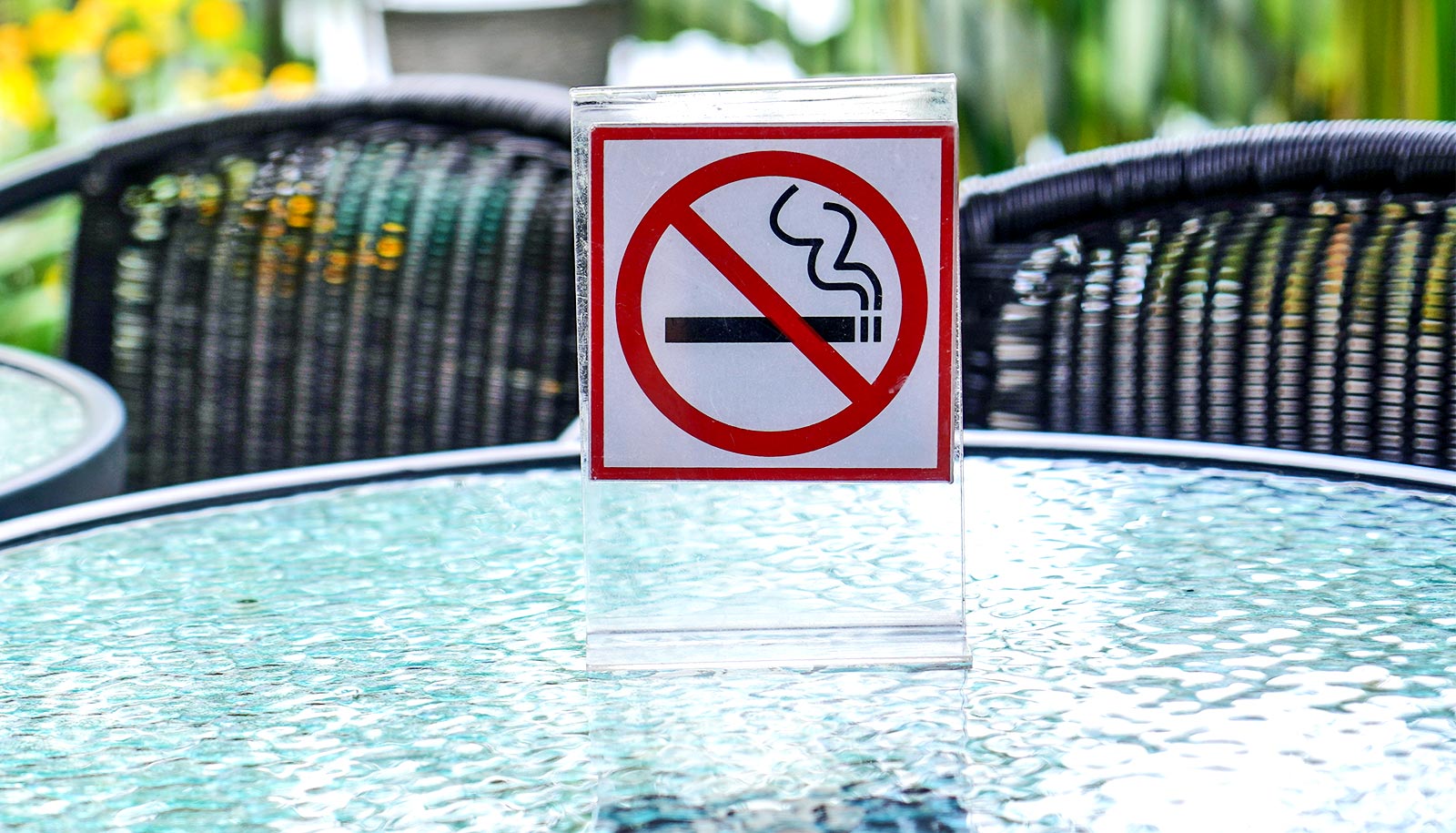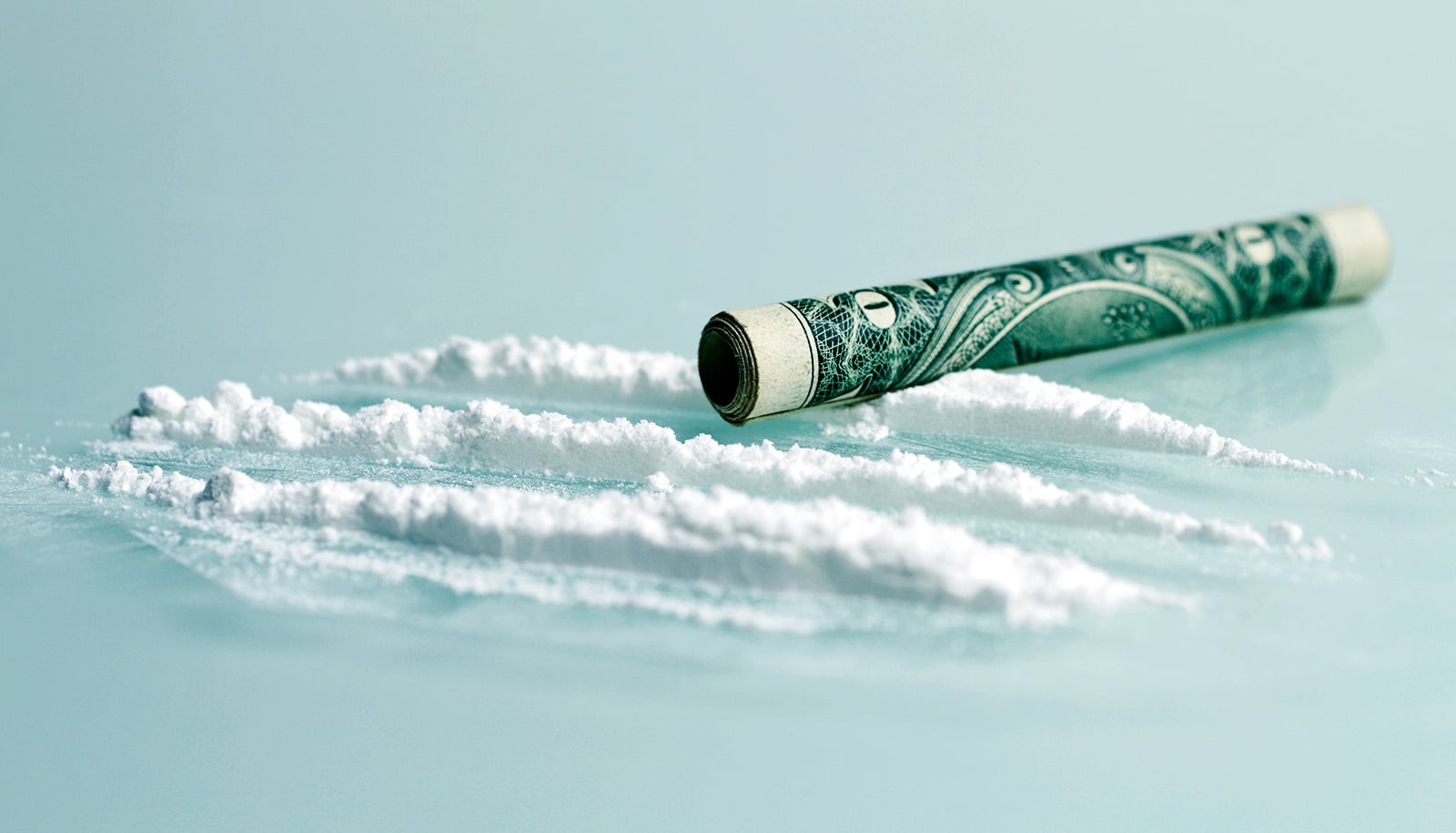Some people think that smokers who can’t light up will reach for food in lieu of cigarettes. But a new study suggests smoking abstinence doesn’t greatly affect our motivation for food.
For the study in Drug and Alcohol Dependence, researchers used cues and actual money to learn how much smokers might spend for cigarettes, food, and water during abstinence. The results provide new insights for how different systems control motivation and reward.
Researchers wanted to know: Do smokers who can’t smoke, for whatever reason, reallocate their resources toward food and water when cigarettes are not an option?
“We found with this sample in this study that the motivations for cigarettes, food, and water do not interact very much,” says Stephen Tiffany, professor in the University at Buffalo’s psychology department. “The results suggest that smoking abstinence does not affect the motivation for food and water.”
“If you’re on an airplane and can’t smoke you’re not likely to be spending more money than usual on snacks.”
The participants in the study were not trying to quit smoking and the findings don’t speak to how trying to quit would influence these motivations. However, food does not become more appealing during those times when a smoker is in a smoke-free environment, or otherwise can’t smoke.
“If you’re on an airplane and can’t smoke you’re not likely to be spending more money than usual on snacks,” says Tiffany, an expert in the assessment, diagnosis, and treatment of addiction who is also affiliated with the Clinical and Research Institute on Addictions
Cigarette, candy, or water?
Most of Tiffany’s addiction research has dealt with cigarette smokers and over the years he’s tried to bring elements of smoking motivation into the laboratory.
Craving is easy to introduce in a research setting by presenting people with cues or reminders of cigarettes, he says. These studies look at behaviors in response to cues, but they don’t allow participants an opportunity to use the cue. It’s look, but don’t touch.
“In those cases we’re studying verbal behavior, but not overt behavior,” he says. “We don’t look at the choice people may actually make.”
For the current study, 50 smokers who abstained for 12 hours, had money to spend on their choices. They sat in front of a box with a sliding door. Inside the box was one of three items: their favorite brand of cigarette, a candy bar they previously said they liked, or a cup of water.
Giving participants “house money” to spend on their decisions, including the option of keeping the cash, has research advantages, says coauthor Jennifer Betts, a psychology department graduate student.
“Unlike many previous studies, people in this study were spending real money, getting real food and cigarettes, and they had real, immediate chances to sample these items.”
Each participant would see the box’s contents following a tone. They rated their craving for that item from 1 to 7 and then determined how much of the $9 they had they’d want to spend to sample one of the cues.
The amount they spent, from a penny to 25 cents, determined whether the door unlocked or not. The more they spent, the greater the chance of the door unlocking, up to a probability of 95%.
“There’s a cost,” notes Tiffany. “Which is true in life.”
In previous research, Tiffany has consistently found that people will spend more for a cigarette than water, but for this study he was interested in food.
“There are interesting relationships between food and smoking, and smoking and weight,” says Tiffany. “Smokers overall weigh less than non-smokers and smokers tend to gain weight when they quit.”
Smoker cues
There are also contrasting notions about food’s appeal during smoking abstinence. Some theories suggest food becomes more appealing, while other theories say that food value decreases as the desire for cigarettes increases.
In this study, non-abstinent smokers spent more money for cigarettes than for food. And more money for food than for water. Abstinent smokers spent even more for cigarettes, but they didn’t spend for food or for water.
“When people are abstinent from cigarettes their craving tends to go up, but they don’t become hypersensitive to the cue,” says Tiffany.
There’s still work to be done, but Tiffany says the findings speak generally to how critical cues are for smokers and how strongly events that remind them of smoking drive craving and determine choices.
“People don’t relapse randomly,” says Tiffany. “They relapse in the presence of opportunities to use which can be triggered by cues.”
Source: University at Buffalo

